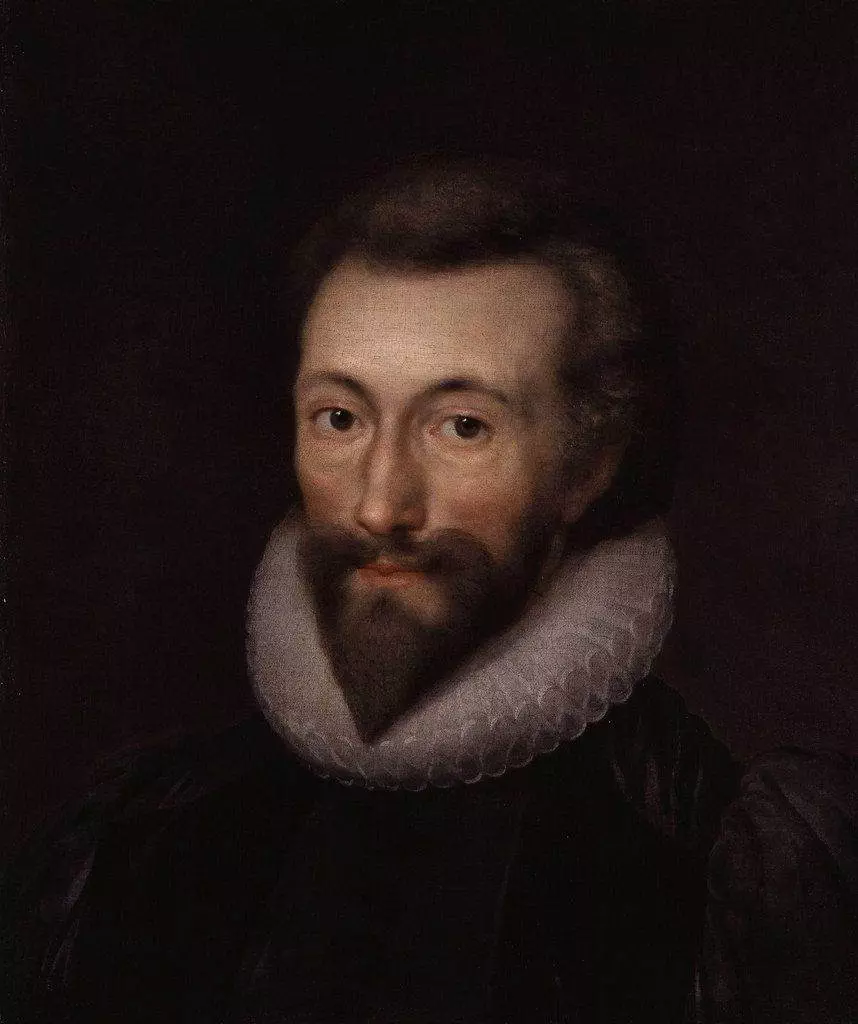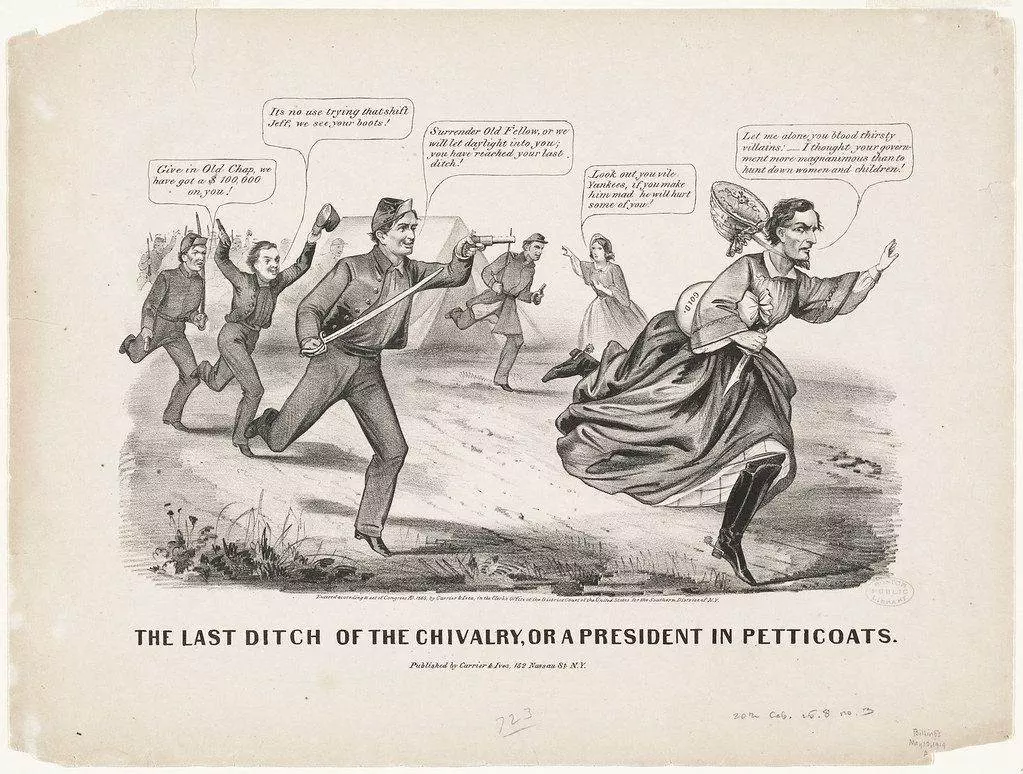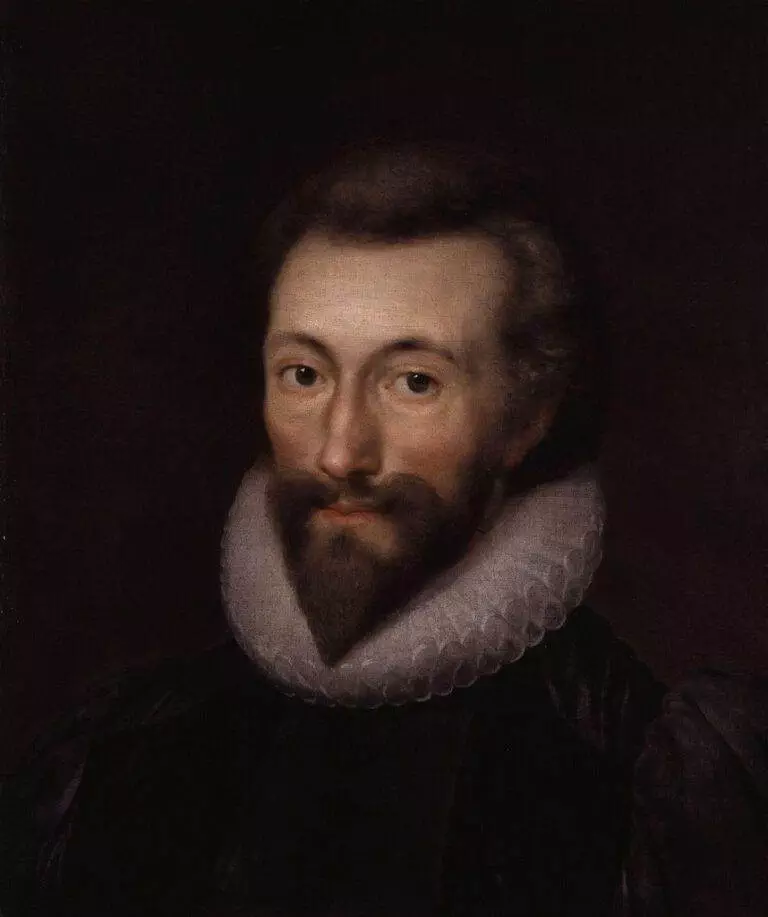Ever wondered what stirred the hearts and minds of people in the Elizabethan era? Dive into the captivating world of Elizabethan poetry, where words transcend time, weaving tales of love, politics, and human experience. From Shakespeare’s sonnets to Marlowe’s passionate verses, this poetic era brims with rich language and profound emotions that resonate even today. Uncover how these poets used their craft to mirror societal norms, express forbidden desires, and challenge authority in an age steeped in tradition.
Table of Contents
Delve into a world where each line is laden with meaning and every word holds a story. Join us as we unravel the beauty and complexity of Elizabethan poetry – a treasure trove waiting to be discovered by modern readers.
Defining Elizabethan Era
Historical Context
The Elizabethan era was a time of great cultural and artistic flourishing in England. It was heavily influenced by the Renaissance, a period known for its focus on humanism, art, literature, and science. The political and religious backdrop of the era also played a significant role in shaping Elizabethan poetry. This was a time when there was a shift from medieval to modern thinking, leading to an explosion of creativity and innovation in various artistic forms. Moreover, the impact of the printing press cannot be overlooked as it revolutionized the dissemination of poetry, making it more accessible to people across different social strata.
During this period, poets were inspired by classical traditions while also incorporating uniquely English elements into their works. The societal values and beliefs prevalent during the Elizabethan era were reflected through poetry, providing valuable insights into the mindset of people living during that time.
Key Characteristics
One of the key characteristics of Elizabethan poetry is its rich imagery and symbolism that vividly depict human experiences and emotions. Poets often used metaphors and allegories to convey profound meanings within their verses. They employed varied forms such as sonnets and narrative poems to express their thoughts creatively.
The fusion of classical traditions with English literary elements resulted in unique poetic expressions that captured both universal themes as well as those specific to English society at that time.
Language Development
The evolution of the English language can be traced through Elizabethan poetry, which witnessed an incorporation of vernacular expressions alongside experimentation with meter and rhyme schemes. Poets made significant contributions towards standardizing certain aspects of language usage within poetic compositions.
Their innovative use of language had far-reaching effects on future literary works; many linguistic features introduced during this period continue to influence contemporary writing styles today.
Literary Terms
In addition to utilizing metaphor, simile, allegory, paradoxes, irony alliteration & assonance are frequently found throughout Elizabethan poetry – these devices added depth & complexity 2the verse-structure & meaning behind each poem’s lines. Iambic pentameter served as one primary structure for verse composition during this period – integrating classical literary devices allowed poets 2create rhythmic & melodic patterns w/in their work.
Poetic Styles and Forms
Sonnet Structures
In Elizabethan poetry, sonnets were a popular form of expression. There were two main sonnet structures: the Petrarchan and Shakespearean forms. The Petrarchan sonnet consisted of an octave followed by a sestet, while the Shakespearean sonnet comprised three quatrains and a final couplet. These rhyme schemes allowed poets to explore different themes within the structured framework of 14 lines.
The placement of the volta, or thematic shift, varied between these two forms. In Petrarchan sonnets, it typically occurred at the start of the sestet, while in Shakespearean sonnets, it often appeared at or near the ninth line. This strategic positioning enabled poets to effectively transition from presenting a problem or situation to resolving it or offering a new perspective.

Themes explored within sonnet structures included love, time, beauty, and mortality. The use of iambic pentameter in both Petrarchan and Shakespearean sonnets lent a musical quality to these explorations.
The influence of Elizabethan poetry’s sonnet structure extended beyond its era into subsequent poetic movements such as Romanticism and Modernism. Notable figures like William Wordsworth drew inspiration from this form when composing their own works.
Notable contributors to this poetic style included Sir Thomas Wyatt and Henry Howard (Earl of Surrey), who introduced Italianate verse forms into English literature during this period.
Narrative Poetry
Elizabethans also excelled in narrative poetry through epics like “The Faerie Queene” by Edmund Spenser and ballads such as “Lord Randal.” These poems depicted heroic deeds and chivalric ideals that resonated with audiences seeking tales of valor and honor.
Narrative poems also delved into historical or mythological events such as battles or legendary quests. Through dramatic monologues and dialogues embedded within these narratives, poets brought characters to life while advancing intricate plots.
This genre had a lasting impact on storytelling traditions across various cultures due to its ability to captivate listeners through vivid imagery woven into compelling storylines.
Pastoral and Nature Themes
Another prominent feature in Elizabethan poetry was its exploration of pastoral themes centered around idealized rural landscapes. Poets reflected on nature’s beauty and simplicity while contrasting urban life with idyllic pastoral settings filled with shepherds tending their flocks amidst serene meadows.
Symbolism associated with natural elements like flowers representing love or trees symbolizing endurance enriched these verses with deeper layers of meaning for readers. Furthermore, Elizabethans’ focus on nature influenced environmental consciousness by prompting appreciation for Earth’s wonders.
Major Themes in Elizabethan Works
Love and Romance
Elizabethan poetry often delves into the portrayal of courtly love traditions, depicting the idealized and chivalrous aspects of romantic relationships. Poets like Sir Philip Sidney and Edmund Spenser explored themes of unrequited love and longing, capturing the emotional turmoil experienced when affection is not reciprocated. They compared physical desire to spiritual connection, emphasizing the depth of emotions involved in romantic pursuits.
The exploration of romantic relationships in society was a prevalent theme in Elizabethan poetry, as poets sought to reflect on the complexities and nuances of love within their cultural context. The enduring impact of this era’s love poetry can be seen in how it continues to influence contemporary expressions of affection through verse.
Love and romance were central motifs that shaped many poetic works during the Elizabethan period, providing insight into human emotions that resonate across time.
Mortality and Transience
In Elizabethan poetry, profound contemplation about life’s brevity is evident through reflections on death, decay, and the passage of time. Poets such as William Shakespeare contemplated mortality with philosophical musings that pondered human transience within a broader existential framework. These reflections offered readers an opportunity to engage with deeper questions about existence.
The themes surrounding mortality also influenced later meditations on human transience by serving as foundational elements for subsequent literary explorations about life’s impermanence.
The exploration of mortality allowed poets to convey universal truths about the human experience while inviting readers to contemplate their own relationship with temporality.
Mysticism and Spirituality
Elizabethan poets integrated religious symbolism into their works as they embarked on a quest for divine truth through verse. By interpreting biblical narratives in poetic form, these writers expressed spiritual yearning and enlightenment within their compositions. This integration had a lasting impact on religious discourse within literature by shaping discussions around faith-based themes.
Mysticism played a significant role in enriching Elizabethan poetry with layers of meaning that resonated deeply with audiences seeking spiritual nourishment from artistic expressions.
Influence of the Elizabethan Court
Courtier-Poets
During the Elizabethan age, poets played a crucial role in royal courts. They were esteemed as courtier-poets, creating literary works that reflected the influence of courtly etiquette and political power dynamics. For example, Sir Philip Sidney, an influential courtier-poet, wrote “Astrophil and Stella,” which explored themes of love and desire within the context of courtly life.
Poetry flourished under patronage by nobility during this era. The aristocracy provided financial support for literary endeavors, allowing poets to focus on their craft without worrying about sustenance. This patronage system not only supported individual poets but also shaped the entire cultural landscape through verse. Poets like Edmund Spenser received patronage from powerful figures such as Queen Elizabeth I herself.
The influence of courtly etiquette on poetic expression was profound. Poetic works often mirrored the refined manners and protocols observed within royal courts, showcasing an intricate interplay between artistry and social norms. Moreover, these poems offered reflections on political power dynamics, providing insight into the complexities of governance and authority during the Elizabethan era.
Patronage System
The relationship between poets and patrons had a significant impact on creative freedom versus patron expectations. While patrons provided essential financial backing for poetic pursuits, they also expected praise in return through dedicated verses or sonnets celebrating their achievements or virtues.
This exchange influenced how poets navigated their creative endeavors within specific boundaries set by their patrons’ preferences or demands. However, it also allowed them to preserve a poetic legacy deeply intertwined with noble influences from that period.
The role played by this patronage system extended beyond mere financial transactions; it fostered enduring relationships between artists and benefactors while shaping artistic output according to societal expectations prevalent at royal courts.
Cultural Conduits
Poetry served as a potent medium for social commentary during the Elizabethan age. Poets utilized verse to reflect upon societal norms and values prevailing at that time while offering critical insights into contemporary issues such as love, morality, honor, and loyalty.

Literary works produced during this era exerted considerable influence on public opinion by engaging readers with thought-provoking narratives steeped in cultural significance. Through these writings emerged an exploration of personal emotions alongside broader explorations into human nature itself – all contributing to shaping cultural identity during this period.
Notable Figures of the Era
Edmund Spenser
Edmund Spenser, a prominent Elizabethan poet, is celebrated for his remarkable contributions to literature during the Golden Age. His renowned work “The Faerie Queene” stands as a testament to his prowess in epic poetry. This influential piece not only showcases his literary talent but also exemplifies the era’s emphasis on chivalry and courtly love.
Spenser’s use of allegory in “The Faerie Queene” captivated audiences while conveying profound moral messages. As a courtier-poet, he navigated the intricate social and political landscape of Elizabethan England, leaving an indelible mark on both poetry and court life.
Spenser’s influence extends beyond his literary achievements; it permeates throughout subsequent generations of poets who drew inspiration from his works. His legacy within the Elizabethan literary canon remains unparalleled, solidifying him as one of the most revered figures of this prolific era.
Influential Sonneteers
The Elizabethan era witnessed the emergence of influential sonneteers whose enduring impact continues to resonate in contemporary literature. Pioneering figures such as William Shakespeare and Sir Philip Sidney revolutionized sonnet composition, exploring diverse themes ranging from love and politics to faith and human nature.
Shakespeare’s timeless sonnets delve into profound emotions with eloquence, captivating readers across centuries. Meanwhile, Sir Philip Sidney’s astute exploration of love through sonnets elevated this poetic form to new heights, setting a standard that subsequent poets sought to emulate.
These sonneteers’ distinct approaches enriched the artistic landscape by infusing depth and complexity into their compositions. Their enduring popularity underscores their significance in shaping poetic traditions that endure today.
Metaphysical Beginnings
During this illustrious period known as the Golden Age, metaphysical poetry emerged as a revolutionary movement characterized by its fusion of intellectuality with emotional depth. Poets like John Donne illuminated abstract concepts through verse, challenging conventional norms with their innovative approach.
Metaphysical poets delved into philosophical discourse through their distinctive style marked by wit and conceits—clever extended metaphors that became emblematic features of their works. Their intellectual pursuits resonated deeply within society at large, influencing not only literature but also broader discussions on philosophy and spirituality.

This groundbreaking movement laid the foundation for an entirely new genre characterized by introspection and intellectual rigor—a departure from traditional poetic conventions prevalent during earlier periods.
The Faerie Queene’s Impact
Allegory and Virtue
Elizabethan poetry often utilized allegorical storytelling to convey moral lessons. In this style, virtues were personified, allowing the poet to explore ethical dilemmas within a societal context. For example, Edmund Spenser’s “The Faerie Queene” presents characters like Redcrosse (representing Holiness) and Una (symbolizing Truth), embodying virtues that readers could learn from. This allegorical approach continues to be relevant today as it offers enduring insights into universal truths.
Allegories in Elizabethan poetry provide reflections on ethical dilemmas through symbolic narratives. By using characters and events as representations of abstract qualities or ideas, poets can delve into complex moral issues without being bound by specific historical contexts or individuals. This allows for a timeless exploration of human behavior and values, making these works relatable across different eras.
The enduring relevance of allegory in conveying universal truths is evident in how such poetic devices are still studied and appreciated today. Readers continue to find value in deciphering the deeper meanings behind allegorical representations of virtue, vice, love, and other human experiences found in Elizabethan poems.
Complex Themes
Elizabethan poetry delves into multifaceted themes, offering layered interpretations that challenge readers’ intellectual engagement. Poetic works from this era explore diverse topics such as love, mortality, spirituality, politics, nature, and more with depth and complexity. For instance,”Sonnet 18″ by William Shakespeare not only celebrates the beauty of a beloved but also grapples with the idea of immortality through verse.
The intersectionality across various themes within Elizabethan poetry encourages nuanced literary analysis among readers and scholars alike. It prompts individuals to consider multiple layers of meaning embedded within the verses beyond their surface interpretations.
Moreover,the legacy left by Elizabethan poets continues to inspire contemporary writers to engage with intricate themes in their own work.While modern literature may differ significantly from its predecessors,it often draws inspiration from the multifaceted exploration seen throughout Elizabethan poetry.
Sonnets’ Role in Poetry
Petrarchan Form
Petrarchan Form – This form of sonnet originated from the Italian poet Petrarch and is known for its division into an octave-sestet pattern with a volta shift. The volta refers to the turn or change in the theme or focus of the sonnet, typically occurring between the octave and sestet. In Elizabethan poetry, this structure was widely adopted and adapted within English poetic tradition. It focused on themes such as unattainable love or idealized beauty, which greatly influenced subsequent developments in sonnetry.
The adaptation of Petrarch’s form within English poetry played a significant role in shaping sonnet conventions during the Elizabethan era. Writers like Sir Philip Sidney and Edmund Spenser were among those who embraced this form, infusing their works with themes that resonated with readers at that time. For example, Spenser’s “Amoretti” exemplifies how he utilized the Petrarchan form to convey his experiences of courtship and love.
English Sonnet Evolution
The transformation from Italian to English sonnet form marked a crucial evolution in Elizabethan poetry. During the Tudor period, Thomas Wyatt introduced this new structure to English literature after being inspired by his encounters with Italian poets like Petrarch. However, it was William Shakespeare who truly popularized the English sonnet structure, leaving an indelible mark on its development.
Shakespeare’s influence not only led to widespread adoption but also prompted further adaptation of the sonnet to accommodate nuances of the English language. This resulted in what is now known as the Shakespearean or English sonnet – characterized by three quatrains followed by a final rhymed couplet – which has become synonymous with classic poetic expression.
The impact of these developments reverberated through subsequent generations of poets, inspiring them to explore diverse themes while adhering to established structural norms laid down during this period.
Imagery and Figurative Speech
Classical Allusions
Elizabethan poetry often integrates references to Greco-Roman mythology, using classical figures as symbolic representations. For example, poets may allude to characters like Apollo or Venus to convey specific qualities or emotions. These allusions enrich the poems through intertextuality with classical literature, reflecting ancient philosophical concepts and influencing readers’ understanding.
The use of classical allusions in Elizabethan poetry serves to enhance the depth and meaning of the verses. By referencing mythological figures such as Hercules or Medusa, poets can imbue their work with layers of symbolism that resonate with readers familiar with these stories. This integration not only adds a sense of timelessness but also provides an opportunity for readers to connect with the rich cultural heritage of antiquity.
Furthermore, by drawing on classical allusions, Elizabethan poets could infuse their works with profound philosophical ideas from ancient times. For instance, referring to Plato’s allegory of the cave might allow a poet to explore themes related to perception and reality in a nuanced manner.
Integrating classical allusions into Elizabethan poetry served as a way for poets to pay homage to the literary traditions that preceded them while adding new dimensions and interpretations through their own creative lens.
Personal Tone
An essential characteristic of Elizabethan poetry is its personal tone which allows for the expression of individual emotions and experiences within poetic voice. This subjective approach creates an intimate connection between the poet’s personal reflections and societal context.
The personal tone in Elizabethan poetry enables poets such as William Shakespeare or Edmund Spenser to portray impactful narratives that resonate deeply with readers’ own sentiments. By weaving their personal experiences into their verses, these poets were able not only capture universal human emotions but also provide insights into the social dynamics prevalent during that era.
Moreover, this enduring resonance stems from how Elizabethan poetry, characterized by its personal tone, offers glimpses into both historical events and everyday life experiences during that period. Through this introspective lens, readers are transported back in time while simultaneously finding elements they can relate directly back today.
This level of intimacy found in Elizabethan poems ensures that each piece becomes more than just words on paper; it transforms into a mirror reflecting shared human experiences across generations.
Exploring Complex Issues
Courtly Love
In Elizabethan poetry, the theme of courtly love is a prevalent and captivating subject. Poets often portrayed an idealized depiction of romantic devotion, emphasizing the purity and nobility of love. They explored the conventions governing noble courtship rituals, including the exchange of tokens and gestures to express affection. The influence from troubadour traditions can be seen in their works, as they delved into chivalric codes within romantic relationships.

Poets’ enduring fascination with courtly love themes is evident in their intricate verses that celebrate the beauty and virtues of their beloveds. For example, William Shakespeare’s sonnets are renowned for their exploration of unattainable love and longing, reflecting the essence of courtly love through his eloquent language and emotional depth.
The portrayal of courtly love in Elizabethan poetry offers valuable insights into societal norms, gender dynamics, and expressions of desire during that era. It provides a window into understanding how romance was perceived among nobility and how poets articulated these sentiments through their literary work.
Religious Undertones
Religious undertones permeate many Elizabethan poems, as poets interweaved Christian symbolism into poetic imagery to convey profound spiritual contemplations. Their verses often reflected on faith, sin, redemption, and other theological debates prevalent during that time period.
Through evocative language and vivid metaphors, poets engaged with theological concepts within their poetry to provoke introspection among readers about spiritual devotion amid earthly existence. This integration allowed them to reflect on moral dilemmas while also offering solace or guidance through religious allusions embedded in their work.
One prominent example is John Donne’s “Holy Sonnets,” where he skillfully intertwines religious themes with personal reflections on mortality and salvation. His poems exemplify how Elizabethan poets grappled with existential questions by infusing religious undertones into their writing.
The enduring impact of such religious discourse continues to resonate across generations as readers delve into these timeless pieces seeking solace or enlightenment amidst life’s complexities.
Canonical Shifts and Legacies
Canon Changes
Literary canons have undergone redefinitions due to the profound impact of Elizabethan poetry. These changes include the inclusion or exclusion of certain poets based on evolving critical assessments. For example, previously overlooked or marginalized poets from the Elizabethan era are being recognized for their contributions to literature. This reevaluation is influenced by cultural shifts, as modern perspectives allow for a more inclusive approach to canon formation.
Moreover, there are ongoing debates surrounding canon formation in relation to Elizabethan poetry. Scholars and literary critics engage in discussions about what constitutes the literary canon and how it should be defined in light of historical and cultural contexts. The inclusion of non-Western canons has also been a subject of debate, broadening the scope beyond traditional Western literature.
Enduring Influence
The enduring influence of Elizabethan poetry is evident through its perpetuation across centuries via academic study. It serves as an inspirational source for subsequent poets who draw from its rich tradition, language, and themes. Even today, students worldwide study Shakespeare’s sonnets and plays as part of their academic curriculum.
Furthermore, this poetic legacy continues to undergo continual reinterpretations across different eras. Each generation brings new insights into these timeless works, breathing fresh life into them while preserving their original essence.
Integration into popular culture further exemplifies the sustained relevance of Elizabethan poetry in contemporary literary discussions. From film adaptations to theater productions, these works continue to captivate audiences globally.
Selecting Quintessential Works
Celebrated Poems
Elizabethan poetry is renowned for its iconic works that have left an indelible mark on literary history. These poems encompass a diverse range of themes, from love and nature to morality and the passage of time. The enduring impact of these celebrated works is evident in their continued appreciation by readers and scholars alike. For instance, William Shakespeare’s sonnets are considered quintessential Elizabethan poetry due to their exploration of love, beauty, and mortality.
The contributions of these poems extend beyond the confines of the Elizabethan era, with their influence permeating global literary heritage. They continue to be studied and analyzed by scholars worldwide, highlighting their lasting significance in shaping not only English literature but also the broader landscape of poetic expression.
Moreover, ongoing scholarly analysis has shed light on the profound influence these celebrated poems have had on subsequent generations of writers. Their timeless appeal continues to captivate audiences across different cultures and languages, emphasizing their universal relevance in the realm of literature.
Thematic Representations
The thematic representations found in Elizabethan poetry offer a rich tapestry that reflects various aspects of the human condition. From exploring themes such as love, betrayal, ambition, and mortality to delving into societal norms and moral dilemmas, these poets provided a comprehensive portrayal that resonates with readers across generations.
This intersectionality across themes enriches poetic discourse, providing diverse perspectives that capture the complexities inherent in human experiences. For example, Edmund Spenser’s “The Faerie Queene” encompasses allegorical representations that delve into virtues such as holiness or temperance alongside more personal explorations like romantic love or chivalry.
Summary
You’ve just taken a deep dive into the captivating world of Elizabethan poetry. From understanding its defining characteristics to exploring the influence of the era’s court and notable figures, you’ve uncovered the intricate web of themes, styles, and forms that defined this period.
The impact of “The Faerie Queene” and the role of sonnets in poetry have been unveiled, along with the exploration of complex issues and the lasting legacies of quintessential works. Now, armed with this knowledge, it’s time to immerse yourself in the rich tapestry of Elizabethan poetry. Whether it’s delving into more works by renowned poets or analyzing the imagery and figurative speech prevalent in this era, your journey into the realm of Elizabethan poetry has only just begun.
Frequently Asked Questions
What defines Elizabethan poetry?
Elizabethan poetry is characterized by its use of elaborate language, intricate verse forms, and exploration of themes such as love, beauty, and mortality. It often reflects the cultural and social dynamics of the Elizabethan era.
How did the Elizabethan court influence poetry?
The Elizabethan court served as a hub for poets to gain patronage and support for their work. The court’s opulence and political intrigue also provided rich material for poetic expression.
What impact did “The Faerie Queene” have on Elizabethan poetry?
“The Faerie Queene,” written by Edmund Spenser, had a profound impact on Elizabethan poetry by showcasing allegorical storytelling and complex symbolism. Its influence extended to subsequent generations of poets.
Why are sonnets significant in the context of Elizabethan poetry?
Sonnets played a crucial role in capturing intense emotions within strict formal constraints. They became a popular form for expressing themes like love, desire, and beauty during the Elizabethan era.
How did canonical shifts shape the legacies of Elizabethan poets?
Canonical shifts influenced which works were deemed essential or exemplary within the realm of Elizabethan poetry. These changes continue to shape our understanding of this literary period today.




3 Comments
Pingback: Go and Catch a Falling Star by John Donne - LitGram by MukeshRishit
What’s up tto every body, it’s my first visit of this web
site; thhis blog carries remarkable and genuinely good
material for visitors.
Pingback: Fashion in Elizabethan England of 16th Century: A Glimpse into Tudor Style - Fashion Mantras